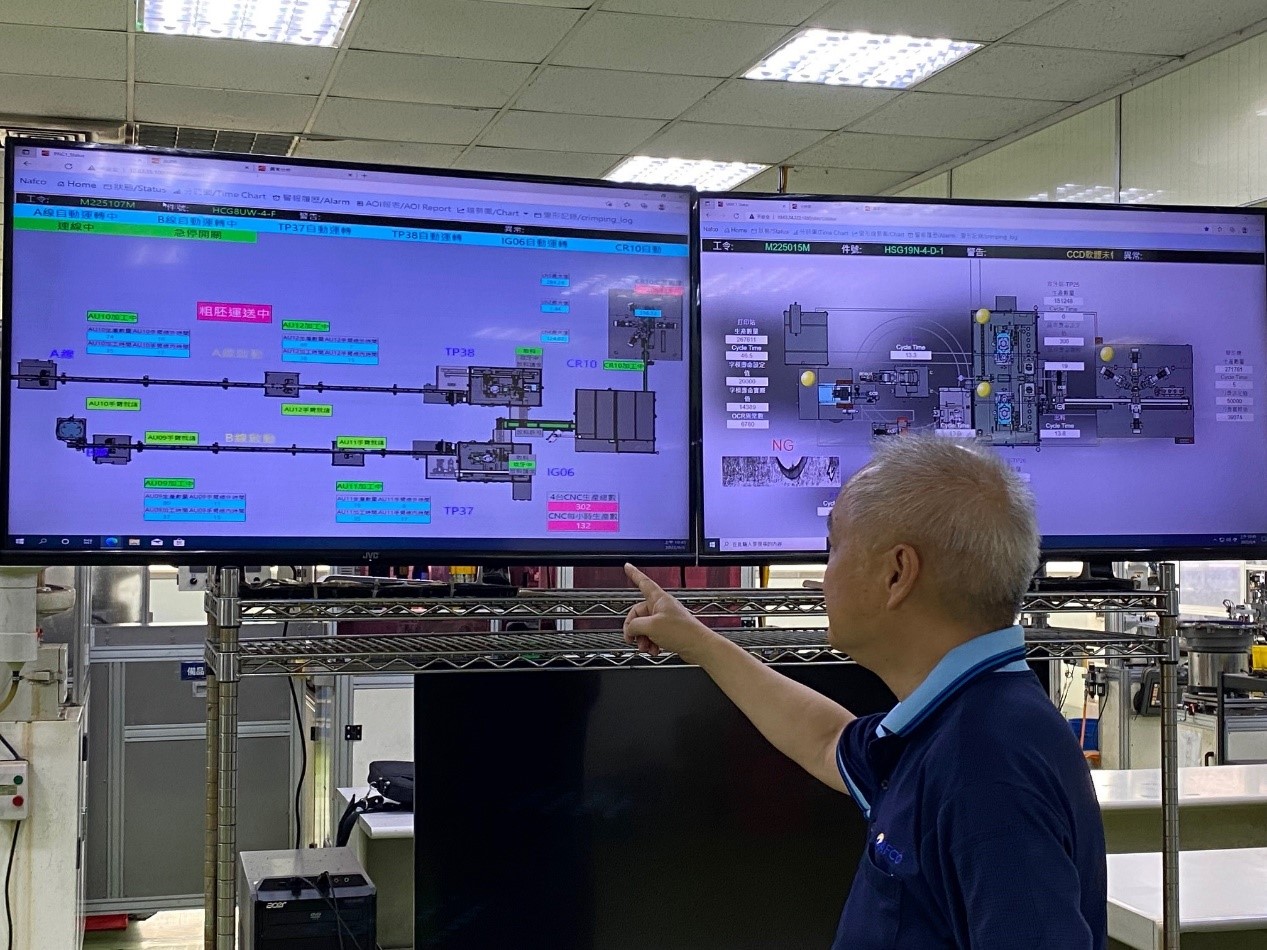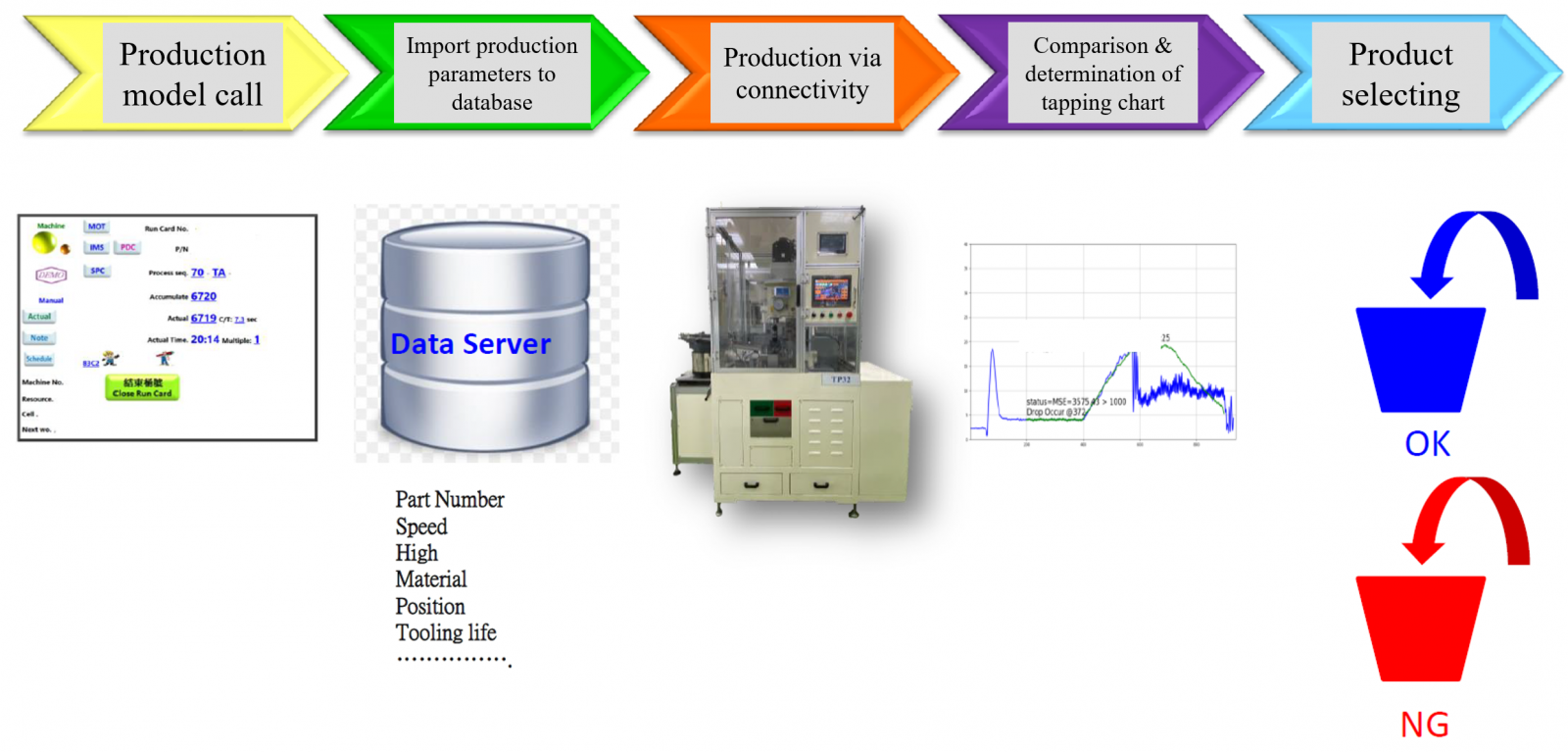Economy & Business
NAFCO's digitalisation evolution
Pursuing efficient production and excellent quality with data-driven decision-making, Asian aerospace parts suppliers leap into the international market
Courtesy of PwC
I. Organization background
Founded in October 1997, NAFCO has been focusing on technology, optimizing manufacturing processes and committed to providing high-quality fastener products for aerospace and advanced industrial applications. With its production plants located in Taiwan and Shanghai, up to 90% of NAFCO’s products are sold worldwide.
It is one of the four largest suppliers of aerospace engine fasteners in the world, and one of the few enterprises which has become a certified manufacturer of aerospace engine fasteners in the Asia-Pacific region.

Fig 1: Li, Chia-Chu, Vice President of NAFCO
II. Implementation approaches
In its approach to digital transformation, NAFCO has gone through three phases: 1) The establishment of connectivity and data measurement indicators: 2) Digitalization of production and quality control and 3) Moving towards advanced the smart control systems (such as the AI tapping machine project) after 2020.
1. Connectivity and establishment of data measurement indicators
As early as 2017, more than 90% of NAFCO’s machines were networked, and as of 2020, the figure had reached over 96%. At the initial stage of its computer networking process, NAFCO collected a large amount of production data and digitalized the key process parameters of components. Through continuous data collection, collation and metric analysis, it gradually built up deep-level knowledge related to production technology.
Importing preliminary manufacturing data measurement indicators
After the initial connectivity, the team were able to review the reasons for poor utilization rates, such as equipment failure, lack of personnel or improper scheduling. Visualized data dashboards were created so that the specialized personnel could understand the status of the machine and further improve/manage utilization in the plant.
Spreading and applying other data measurement indicators
The successful initial import of utilization rate data helped NAFCO to spread and refine the digital architecture and also calculate the Overall Equipment Effectiveness (OEE) in the next step.
The indicators established helped to clearly identify where resources were being wasted and formulate countermeasures. More importantly, NAFCO could accurately assess its maturity level compared with peers in the industry and the gap to be closed. For example, the OEE value of an industry-leading enterprise is 75-80%, a level which NAFCO has not yet achieved. If the utilization rate is only around 50-60%, the performance rate is lower than 70% or yield rate is lower than 97%, it means that the production line can be further improved, or the manufacturing process can be further optimized.
With the above data indicators, a monthly review is conducted to analyse preliminary results of abilities and further assess how to improve the efficiency of resource utilization and meet customers’ expectations. With the data, NAFCO also learnt how to allocate resources when customers place orders. At this point, NAFCO’s OEE had increased from 45% to more than 55%.
2. Digitalized production
NAFCO further introduced Advanced Planning & Scheduling System (APS) based on the data indicators collected so far. With the system, all production data, such as the utilization rate and product cycle time can be used to predict the time it takes to complete tasks and estimate feasible order delivery dates.
APS system imports enhanced cross-system and cross-over analysis
The old planning & scheduling system of NAFCO failed to consider capacity constraints, resulting in machine overload. In view of this, NAFCO implemented APS to take into account the constraints and requirements of capacity, material, machine and production line changes. The combination of different parameters, such as On-time Delivery (OTD) commitment, Work in Process (WIP) status, main parts supply situation etc., were analyzed to achieve the best capacity.
With such a simulation system in place, it became clear how many products could be produced in a day and measure the gap between the output predicted by the APS system and the actual output produced by the machines. Such information is displayed on the dashboard of production lines to help production line operators to adjust production planning in real time, in order to set reasonable output targets. It also shows field supervisors which machines are not running smoothly. They can then switch to other machines for help to prevent delays in tasks.
In addition to this, the cross-over analysis of APS and connectivity can also be applied to detect and control the status of work in process. When the production line is suffering a supply shortage, the inventory of work-in-progress will often increase. However, the more work-in-progress is waiting to be produced, the more complex it becomes to control the production, and the more time it takes to collect and find the materials, thereby prolonging the product manufacturing cycle, increasing inventory management costs and reducing the company’s capital liquidity.

Fig. 2: Equipment and production monitoring dashboard
3. Digitalized QC
Supported by its internal R&D personnel, NAFCO has developed a Product Defect Control (PDC) system to detect defective products. The data control concept of Statistical Process Control (SPC) was introduced to facilitate the real-time monitoring of the manufacturing quality of managers. In addition, through regular reviews of work order errors on the PDC system, NAFCO can also ensure that the production line has sufficient and high-quality manpower.
Real-time control over production line quality
The PDC system can detect work orders under exceptions. In cases where there is a quality exception or task delay, the PDC will then send out corresponding messages to customers, plants or suppliers, reminding employees to deal with the defective products or adjust production plans based on the delayed tasks. Field operators can use the system to check the basic information of product and work orders to confirm the operation situation of production lines.
NAFCO can perform better in SPC with two functions based on the establishment of machine connectivity. The first is real-time monitoring. Thanks to smart networking, the inspection data of each product can be presented on the dashboard in real time so that operators can refer to it for debugging in a timely manner. The second is to serve as reference for monthly or weekly reviews, mainly for counting the Process Capacity Indicator (CPK), identifying the CPK value of particular difference, and paying special attention to or improving processing problems. NAFCO goes beyond the 6 Sigma process, suggesting that the quality level of the production process is almost 100%, higher than general requirements for product quality of the manufacturing industry.
Comprehensively strengthening employees’ quality
Based on Eight Disciplines Problem Solving method (8D), the PDC system records historical abnormal work orders so that NAFCO can trace them. In this way, NAFCO learns lessons from the data to enhance education and training on production lines.
NAFCO used to make written hard copy records, which is not sufficient for analytical purposes. After implementing the PDC system, detailed related materials and data can be presented before morning meetings, to remind employees of previous errors and thereby help them to avoid making similar mistakes.
4. Smart control system: the AI tapping machine project
After 2020, NAFCO began to move towards an advanced smart control system, mainly by cooperating with external enterprises in process parameter control and digital transformation experience.
Creating an AI model and automatic error monitoring
The first project was to introduce a tapping machine using artificial intelligence, starting with extracting the signals and data from the preset sensors, servers and digital dashboards. Then, parameters, such as speed, material, location, tool life and load status for each motor were set. In practical operations, the tapping machine will display blue and green lines during real-time operation analysis and comparison to judge the status of production, thereby helping staff to figure out the reason for machine failure and future traceability (as shown in Fig. 3).
It took 2 years to standardize the parameters of the process and create AI machine learning and modeling. As well as analyzing the reasons for exceptions, including the motors not working well, tool collapses, short tool life, product materials mixed or machine idling, loose nuts etc., the system was gradually developed to be able to automatically monitor for human errors.
External resource support and independent R&D investment
It took a lot of work for NAFCO to conduct the necessary research and work out how to convert these problems into data signals and waveforms. NAFCO consulted with professional statisticians and data scientists from external enterprises to assist with collecting the electronic signals and building a preliminary model. However, the actual operation of the advanced model construction depended entirely on NAFCO's own research and development and was also one of the most laborious processes of digital transformation for them.
As for actual cost effectiveness, the tool life doubled from producing 600 fasteners to 1,200 units thanks to more accurate data model analysis. Traditionally, engineers used to follow the predefined tool life provided by the supplier or their past experience of tooling lifespans. In the past, after 600 fasteners had been tapped the tooling blade would be replaced to avoid things going wrong. Now that there is an AI model in place that provides more accurate monitoring, problems will be detected in time and tool life can be estimated more accurately. With actual supporting data, engineers are more willing to try and make mistakes. Extending tool life brings considerable cost savings.

Fig. 3: Structure of AI implemented in traditional tapping machine
III. Critical success factors
There have been three critical success factors in NAFCO’s digital transformation. The first is encouraging employees to develop their own core technical skills. Employees are required to research and master all aspects from basic connectivity technology to AI model establishment and training as well as production management and introduction of digitalized model and methods. With expectations to have comprehensive knowledge and make continuous improvements, employees are better equipped to deal with emergencies quickly and effectively.
The second is having clear and transparent data-driven goals. Every digital transformation project should have clear data indicators, through which you can quickly measure whether the enterprise’s investment and its own input are relatively proportional to its output. Moreover, having measurable and transparent common goals also effectively assists NAFCO in promoting cross-departmental digital transformation projects, and helps to develop closer partnerships between all departments to generate good value and results.
The third key success factor is to utilize external experts to accelerate digital transformation and reduce risks. To accelerate digital transformation and reduce learning costs, NAFCO brought in external experts with software know-how. Regular and intensive reviews of production status and counseling by retired consultants, has successfully boosted morale and cooperation between departments and the willingness to implement digital transformation.
IV. Lessons learned
To sum up, NAFCO has taken two key steps to create new value. Firstly, NAFCO has adopted a leadership style that is distinct from the traditional patriarchal leadership style of traditional enterprises. Instead, it has introduced various data indicators and management models, and given employees the opportunity to discover problems from data, develop the best solutions, participate in innovation and make contributions. At the same time, daily morning meetings not only enable the staff of each production line to report on the real situation on the front line, but also enable senior management to understand and solve problems more comprehensively, linking the organization from the bottom to the top.
Secondly, NAFCO has created an organization that is outcome-oriented and formulates strategies based on data. In digital transformation, employees are prone to muddle through their work. NAFCO, however, has subverted the traditional way of working independently, so that employees can make concerted efforts by creating dedicated departments and teams for digital transformation projects to bring IT, data analytics, and engineering people from their original departments into one team. Retired consultants and data scientists were also hired to help employees make the transition through the established management culture, digital systems and data metrics.